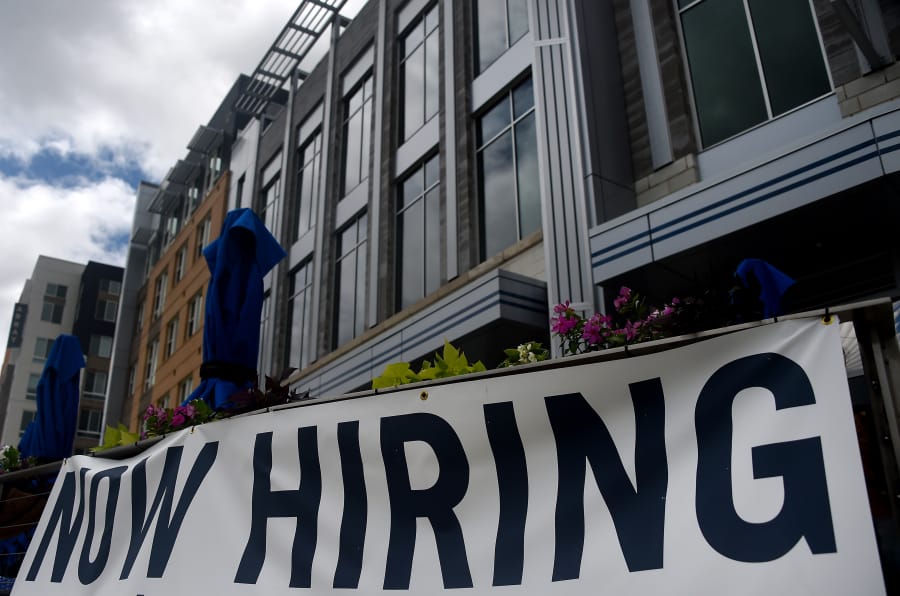Amid new signs of a cooling job market, the bargaining power many workers have wielded over desperate employers during the pandemic could be at a tipping point.
Job postings for some of the state’s biggest employers have declined in recent months in part as some companies rein in expansion over fears of inflation and the recession risks of the government’s anti-inflation strategy.
Boeing, which was on a hiring tear this spring, posted 6,250 openings during the May-August period, or less than a quarter of the number it posted from February-May, according to data reported Thursday by the state Employment Security Department.
Even Amazon, which ballooned in size during the pandemic, saw its four-month postings fall by almost a third between July and August.
“I don’t think that you’ll see us hiring at the same rates that we did,” CEO Andrew Jassy acknowledged at a conference Wednesday, according to The Wall Street Journal. In July, the Seattle-based online retail and cloud computing giant reported a $2 billion loss largely attributable to its investments in electric vehicle maker Rivian.
Across all employers in Washington, total monthly job postings dipped by 5.1% between June and July, the first decline since January, according to a separate labor supply and demand report posted by ESD on Wednesday. (August supply-demand data isn’t yet available.) Food service openings fell 6.2%. Construction openings fell nearly 17%.
Hiring hasn’t stopped, by any means. Washington employers added 6,600 jobs in July. But the additions are declining: July’s increase, while up from June, was still only around two-thirds the average monthly increase over the preceding six months.
“One month doesn’t make a pattern … but it does look as a whole as though there’s a little bit of slowing down,” said Anneliese Vance-Sherman, an ESD regional economist who covers the Seattle area.
If that slowdown continues and the unemployment rate, now at a very low 3.7%, rises, job seekers may find they’ve “got less leverage,” Vance-Sherman said. “If you’re offered a job … you’re less likely to be in a position to negotiate for your ideal work setting.”
Some recruiters say they are already seeing signs of that power shift, especially in hiring by larger employers.
Although the job market “is still employee driven,” the balance has shifted slightly in some sectors and company types, said Megan Slabinski, who oversees regional hiring for technology, marketing and creative roles with the Seattle office of recruiter Robert Half.
Employers “still have to be competitive from a salary standpoint, but you might not have to go the ludicrous” — by offering candidates extras such as big signing bonuses or stock options, she said. And where qualified candidates might have once counted “three or four offers, now they have two,” she said.
That’s creating opportunities for employers that struggled to hire when the market was so tight. As some larger firms rein in hiring, smaller and midsize firms aren’t getting outbid for talent quite as often, Slabinksi said.
Likewise for firms outside of the high-spending tech sector.
Insurance companies, health care companies, retailers and others offering benefits and pay that can’t compete with tech are increasingly able “to find the talent that they need,” she said.
Other observers say it’s too soon to pronounce the end of the worker’s job market.
Washington’s job market still has triple the number of unfilled jobs it did pre-COVID-19, said Jacob Vigdor, an economist with the University of Washington Evans School of Public Policy who follows state and local job markets.
The biggest constraint on hiring isn’t employer uncertainty, but “the lack of available workers, in virtually every industry and in every corner of the state,’” Vigdor said.
“If employers are maybe posting slightly fewer positions than a month or two ago, it might be because they are just giving up, or because they’ve anticipated the seasonal slowdown that comes at the end of summer,” Vigdor said.
“All that looks like to me is a historically incredible labor shortage easing just a bit,” Vigdor said. “It’s still a great time to be looking for work in Washington state.”



